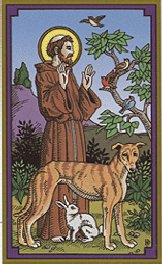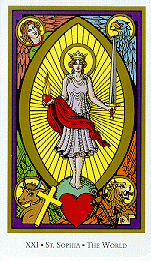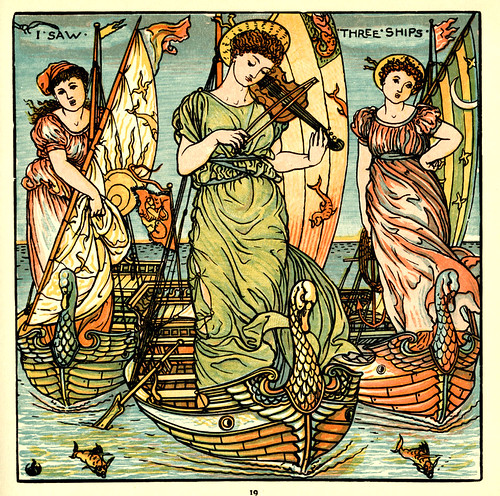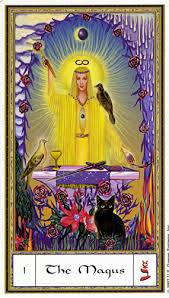The August Ides approaches and I'm feeling wistful. The streghe who encouraged me to write this article a few years back are deceased or living many miles away, and although I've met others since then, their ways never gelled quite the same, never felt quite so authentic to me. After much soul searching, I've decided that this path is not for me now. It's not one I'd recommend to eclectics.
Nevertheless I want to include this article, written 7 years ago, in my blog. It harkens to things I want to keep fresh in my memories...
 The Ides of August is one of the most hallowed times of the year for both Roman Catholics and Italian Pagans. It's the time of the ancient Feria Nemoralia (aka Festival of Torches), later adopted by Catholics to be The Feast of the Assumption. (1) In Italy, this Feria is celebrated either on the 13-15th of August or during the August Full Moon. In 2011, the solar and lunar Ides will coincide...
The Ides of August is one of the most hallowed times of the year for both Roman Catholics and Italian Pagans. It's the time of the ancient Feria Nemoralia (aka Festival of Torches), later adopted by Catholics to be The Feast of the Assumption. (1) In Italy, this Feria is celebrated either on the 13-15th of August or during the August Full Moon. In 2011, the solar and lunar Ides will coincide... This poem by Ovid, from his Fasti, describes the ancient celebration:
In the Arrician valley,
there is a lake surrounded by shady forests,
Held sacred by a religion from the olden times...
On a long fence hang many pieces of woven thread,
and many tablets are placed there
as grateful gifts to the Goddess.
Often does a woman whose prayers Diana answered,
With a wreath of flowers crowning her head,
Walk from Rome carrying a burning torch...
There a stream flows down gurgling from its rocky bed...
)0(
Picture this. It is the August Full Moon. A long procession of twinkling lights wind down what is now called Via Diana, or, Diana's Road. The pilgrims forming this procession of torches and candles line up alongside the dark waters of Diana's Mirror, or Lake Nemi. (2) One of the Earth's most sacred sites, the lake is just a few miles south of Rome, Italy, and is dedicated to Diana, the Great Goddess of the Moon. The lake, in a volcanic crater, is almost perfectly oval, and from the vantage point where the Temple of Diana once graced its banks, you can see the Moon reflected clearly in the smooth as glass, dark mirror of water.
The Full Moon shines high in the night. Hundreds have come to Diana's lake, wearing flowers wreathed around their necks and foreheads. According to Plutarch, everyone there had made a special ritual of washing their hair before dressing it with flowers. Garlanded hounds also marched by the side of hunters. Little boats, lit by oil lamps strung on prow and stern, ferried festive crowds back and forth across the lake, traveling from the south jetty to Diana's temple on the north bank. La Luna, rising high overhead, gazed down on the pilgrims and on Her reflection in the lake.
Those gathered there would write small messages on ribbons and tie them to a fence at the sanctuary, in supplication to She Who Provides. Likewise, numerous small statuettes of body parts would have been found there. It was common practice in Italy (and Greece) to bake a small model of an afflicted part of the body and offer it to a God or Goddess as a votive. Also offered were small clay images of mother and child, and tiny sculptures of stags, one of the favored animals of Artemis/Diana. Apples were likewise given to Diana as the Soul of Nature who protects all species, including humans.
Offerings of garlic are made to the Goddess of the Dark Moon, Hecate, during the festival. In Wicca, Diana is often considered the Maiden aspect of the Moon Goddess, Who manifests as Maid, Mother, and Crone. But at the festival of the Nemoralia, Diana is the Mother, and Hecate is the Crone.
)
So who is the Maiden?
Diana has a legendary daughter, Aradia, whose birthday is given as August 13, 1313. Aradia, so the story goes, was sent to Earth by Her divine Mother to empower the weak and oppressed, particularly the Pagans and gypsies who were chained in slavery to church and state. She was a sort of female "Robin Hood" of the Alban Hills of Italy. Aradia's Mother, the Goddess Diana, like Robin Hood's Father, Herne (Cernunnos), blessed the oppressed and down-trodden, the peasant, the heathen, all those noble souls and noble "savages" who society despises. Diana's most notable temple in Rome was situated on the most apparently humble of Rome's Seven Hills, the Aventine. The ritual hairwashing that precedes the trek to Nemi also preceeded a procession that ended up at the Aventine.
It seems Diana had fewer temples built to Her than any other of the main Deities in the Classical pantheon, which no doubt suits Her, since certainly a Goddess of Nature prefers to be worshipped in Her natural groves. And so we go to a wild and natural area and choose a tree to decorate. Traditionally this would have been an evergreen, and on its branches are placed symbols such as silver moons, bows and arrows, tiny animals, as well as ribbons, bells, and other choice items. If you are suffering from any kind of illness, you can make a symbol of that too, and hang it on the branches in supplication for healing. Imagine Her arrows piercing your pain, discomfort, or disability with a powerful potion of wellness.
The Festival of Torches evolved to become one of those sacred times when the hunting or killing of any beast was forbidden all over Italy. It was a Time of Blessing that extended a truce between humankind and the natural world. Likewise, slaves and women were free from their duties during this feria. Men and masters did participate in the festival, but they were required to be on equal terms with women and slaves. One Roman poet, Propertius, apparently did not attend the festival in the 1st century CE, as indicated in these words to his beloved:
Ah, if you would only walk here in your leisure hours.
But we cannot meet today,
When I see you hurrying in excitement with a burning torch
To the grove of Nemi where you
Bear light in honour of the Goddess Diana.
At night the lights of hundreds of torches reflected upon Diana's lake and sparkled magically upon the surface. Lamps not unlike these torches were used by Vestal virgins and have been found with images of the Goddess at Nemi, hence Diana and Vesta are sometimes considered one and the same Goddess.
)0(
The nymph Egeria, who resides in a waterfall spilling into Lake Nemi, is also an aspect of Diana. She is intimately connected with Numa, who was the king of Rome after Romulus, and whose kingship's well being was dependent on his relationship with Her, Diana Egeria, Lady of the Lake. Louis Spence, in the 13th century tale, Sir Lancelot of the Lake, tells us that the Lady of the Lake dwells in the Lake of Diana. Egeria is thus one and the same as Diana, who is also the Lady of the Lake, and is Merlin's lady Nimue (a name similar to, and which may be derived from, "Nemi").
There are also parallels to Shakespeare's Midsummer Night's Dream: Titania, Regina elle Fate (Queen of the Fairies), is equated with Diana, Regina delle Streghe (Queen of the Witches). Hippolytus, who died and was resurrected and spirited to Nemi by Diana (as Virbius, the first Rex Nemorensis), was the son of Theseus (some say Oberon) and Hippolyta. And Puck, the goat like prankster, has his own festival in Britain at this same time of the year, the Puck's Fair. Thus the Midsummer Night's Dream continues on through August.
(1) All of Italy seems to agree that this is the best time of year to take a holiday. Travel agents warn against going to Italy in mid-August; almost the whole country shuts down business for the hallowed Feast of the Assumption. This feast day of Mary, Mother of God, seems to the Italian Catholics to be an even more important holy day than Christmas. This link for more about Our Lady of the Assumption. (2) Nemi is from the Latin nemus, meaning sacred wood, sacred grove. A travel journal entry of Lake Nemi, site of the Nemoralia, where I was in September 2001.
 The Fool in the Tarot of the Saints is my favourite saint, Francis of Asissi (pictured, artist Robert Place, used with permission), whose feast day is tomorrow, October 4. In his youth he was a bit of a Bacchus himself, the spoiled young son of a rich merchant who loved and indulged freely in the proverbial "wine, women and song". But his father disowned him when he gave all his possessions to the poor and took up a life of joyful asceticism, a sort of medieval Thoreau. He was a "beast whisperer" who blessed all the animals he encountered in his extensive travels throughout southern Europe. Even today, some Catholic churches hold animal blessings on or near his feast day. He is the patron Saint of Italy, animals, and modern folklorists declare him the patron saint of simple living.
The Fool in the Tarot of the Saints is my favourite saint, Francis of Asissi (pictured, artist Robert Place, used with permission), whose feast day is tomorrow, October 4. In his youth he was a bit of a Bacchus himself, the spoiled young son of a rich merchant who loved and indulged freely in the proverbial "wine, women and song". But his father disowned him when he gave all his possessions to the poor and took up a life of joyful asceticism, a sort of medieval Thoreau. He was a "beast whisperer" who blessed all the animals he encountered in his extensive travels throughout southern Europe. Even today, some Catholic churches hold animal blessings on or near his feast day. He is the patron Saint of Italy, animals, and modern folklorists declare him the patron saint of simple living.


















